A Consumer’s Guide: Ensuring the Safety of Pet Food
ID
FST-433NP
Introduction
As of 2021, 70% of U.S. households, approximately 90.5 million, own a pet dog, cat, bird, horse, fish, reptile, or small animal (APPA, 2022). This number is up 14% (as 56% of U.S. households owned a pet in 1988), and it continues to rise annually.
Between 2017 and 2021, animal food and veterinary medicine products were implicated in 114 recalls (FDA, 2022b). For example, in December 2020, there was recall of dog and cat food products containing an ingredient contaminated with aflatoxins (FDA, 2021). This pet food contamination event led to more than 110 dogs dead, and more than 210 sick dogs (Gibson, 2021). FDA has stated these figures are approximate and may not reflect the total number of pets affected (Gibson, 2021). Pet owners should be mindful of the potential risks when buying, preparing, and storing a pets’ food.
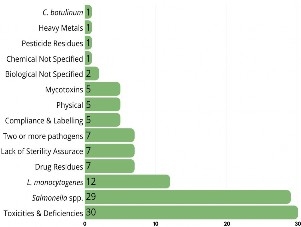
Buying Pet Food
The type and brand of food you buy for your pets should be at the discretion of you, and your veterinarian. No matter what type of food you are purchasing, only buy pet food products/treats that are in good condition. Always check the packaging for visible signs of damage, such as dents, tears, punctures, and discolorations.
Preparing and Handling Pet Food
How you prepare and handle pet food is important to maintaining the safety and quality. Here are some best practices when preparing and handling pet food:
Before and after handling pet food and treats, wash your hands for at least 20 seconds with soap and water.
Have designated scooping utensil and storage containers that are only used for pet food in order to avoid cross contamination.
Do not use your pet’s food bowl as a scooping utensil.
Wash pet food bowls and scooping utensils with soap and water or in the dishwasher after each use.
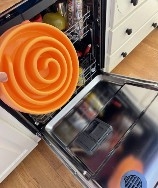
Storing Pet Food
Ensuring the proper storage of pet food can assist in maintaining its safety and maintain the products’ nutritional value. Here are some best practices for storing pet food:
Store pet foods and treats in the original container. This allows you to have the UPC code, lot number, brand, and manufacturer information easily available, in case of a product defect or recall.
If you need to pour dry pet food into another storage container, make sure it’s clean, dry, and has a lid that fits snuggly (to keep rodents or other pests from the pet food/treats). Alternatively, take a picture of the UPC code, label and lot number for your record.
Store dry pet food, and unopened, canned wet pet food in a cool (below 80°F) and dry place.
Tightly cover, and refrigerate canned or moist pet food at or below 40°F.
Keep pet food in a secure location to prevent your pet from eating an entire supply at once, or members of your household from consuming (e.g., small child).
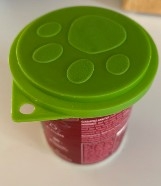
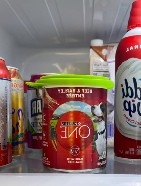
Raw Pet Food
Raw pet foods pose a health risk to pets and pet owners, if certain best practices are not followed (e.g., washing hands after handling, or preventing cross-contamination by cleaning and disinfecting objects that touch raw food). A raw pet food diet can include organ meats, muscle meats, whole or ground bones, raw eggs, pet-safe fresh fruits and vegetables, and dairy products. This also includes feeding your pet frozen or live reptile, amphibian or rodents. Raw pet diets can be homemade, store-bought, freeze- dried, or dehydrated. Pathogenic microbes, like Salmonella, have been found in different raw pet food ingredients. These microbes could make you or others in your household sick, if you/they handle raw food or touch objects that were used when preparing raw food (e.g., a child touching a pet food bowl). If you choose to feed your pet(s) raw food diets, you may follow these best practices (precautions):
Wash your hands with soap and water after handling raw pet food products and ingredients.
Thoroughly clean and disinfect all surfaces and objects that come in contact with raw pet food including countertops, the inside of refrigerators and microwaves, kitchen utensils, mixing spoons, feeding bowls, and cutting boards.
Carefully handle raw and frozen meat and poultry products. Freeze raw meat and poultry products until you are ready to use them, and thaw them in your refrigerator or microwave, in secondary container (to avoid spills/leaks).
If you use raw ingredients to make your own cooked pet food, ensure that you cook all ingredients to proper internal temperatures by measuring with a food thermometer.
If your pet consumers a raw food diets, don’t let your pet lick your face after eating. If you do play with your pet after they have eaten, wash your hands, and or any other parts of your body they licked.
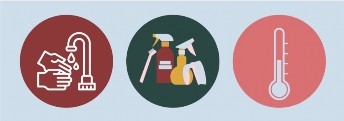
How to Report a Pet Food Complaint
If you think your pet has become sick or injured as a result of consuming a pet food product, you should report your complaints through the Safety Reporting Portal. This goal and purpose of this reportable food registry is to reliably track patterns of adulterated feed and pet food products.
In Virginia, you can also contact the Virginia Department of Agriculture and Consumer Service’s Agricultural Commodities Program (804-225-4558).
References and Resources
American Pet Products Association, 2022. 2021- 2022 APPA National Pet Owners Survey. https://www.americanpetproducts.org/pubs_survey.asp
Centers for Disease Control and Prevention (CDC). 2021. Pet Food Safety. Available at: https://www.cdc.gov/healthypets/keeping-pets-and-people-healthy/pet-food-safety.html
Food and Drug Administration (FDA), 2022a. Pet Food. Available at: https://www.fda.gov/animalveterinary/animal-food-feeds/pet-food
Food and Drug Administration (FDA), 2022b. Recalls and Withdrawals. Available at: www.fda.gov/animal-veterinary/safety-health/recalls-withdrawals
Food and Drug Administration (FDA), 2021. FDA Alert: Certain Lots of Pet Food from Multiple Brands Recalled for Aflatoxin. https://www.fda.gov/animal-veterinary/outbreaks-and-advisories/fda-alert- certain-lots-pet-food-multiple-brands-recalled-aflatoxin
Food and Drug Administration (FDA), 2018. Get the Facts! Raw Pet Food Diets can be Dangerous to You and Your Pet. Available at: https://www.fda.gov/animal-veterinary/animal- health-literacy/get-facts-raw-pet-food-diets-can-be-dangerous-you-and-your-pet#recalls
Gibson, K., 2021 More than 100 dogs have died after eating recalled pet food. https://www.cbsnews.com/news/dog-food-recall- more-than-110-dogs-have-died-after-recalled-pet-food/
Virginia Cooperative Extension materials are available for public use, reprint, or citation without further permission, provided the use includes credit to the author and to Virginia Cooperative Extension, Virginia Tech, and Virginia State University.
Virginia Cooperative Extension is a partnership of Virginia Tech, Virginia State University, the U.S. Department of Agriculture (USDA), and local governments, and is an equal opportunity employer. For the full non-discrimination statement, please visit ext.vt.edu/accessibility.
Publication Date
September 12, 2022



